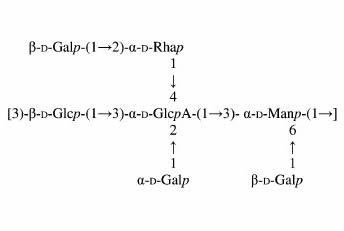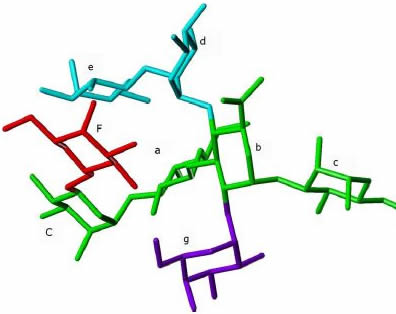Exo-polysaccharide
(Burkholderia cepacia)
.........................................................................................
Introduction
Microbial exopolysaccharides (EPSs), occurring in nature as capsular polysaccharides or slime, are important virulence factors in the pathogenesis of invasive diseases. They are produced by many microorganisms that may infect plants, animals or humans. In species of the genus Burkholderia, they are involved in the interaction of clinical isolates with human host cells. In patients suffering from cystic fibrosis, B. cepacia contribute to a rapid and fatal decline of pulmonary functions. B. pseudomallei is recognized as a major cause of community acquired septicemia. Other functions of exopolysaccharides are related to increase the stability of soil aggregates, which are important factors controlling germination and root growth in plants.
To date, approximately 30 different species are recognized as belonging to the genus Burkholderia. At the present time, structural studies have been reported for only five EPSs produced by such species, including two for B. cepacia, one for B. pseudomallei, B. brasiliensis, B. caribensis strain MWAP71, and for B. tropica, mainly employing biochemical and NMR techniques. While these polysaccharides show distinct repeating units and different monosaccharide proportions, they present particular structural similarities, as the presence of carboxylate groups and to be highly O-acetylated. Taking such aspects into account, their biological and agricultural activities may be influenced or related to their composition, conformation and dynamics
 .
.
The primary structure of the exopolysaccharide produced by a clinical isolate of the bacterium Burkholderia cepacia has been determined as a highly branched heptasaccharide.

Fig. 1 Schematic representation of the primary structure of Burkholderia cepacia.
The conformation of the polysaccharide has been investigated throughout molecular mechanics calculations, using a genetic algorithm search. The repeating unit of the exopolysaccharide is a heptasaccharide with three branches which causes significant steric constraints. Conformational searches were performed on fragments as well as on the complete repeating unit with wrap-over residues. The search showed for favored conformations for an isolated repeating unit.

Fig. 2 3D representation of one of the lowest energy conformations of the repeating unit of Burkholderia cepacia obtained with GLYGAL for one repeating unit of the heptasaccharide of B. cepacia. Letters a, b, and c denote
the main chain residues β-D-Glcp, α-D-GlcpA, and α-D-Manp, respectively, while d, e, f, and g denote the residues α-D-Rhap, β-D-Galp, β-D-Galp, and α-D-Galp, respectively, existing in the branches. The f' residue in red thin lines indicates the conformation of the (1→6)-linked Gal of the secondary
minimum. Hydrogen atoms are not shown for clarity.
However, for a sequence of several repeating units, the calculations indicate a single, well-defined linear conformation.








